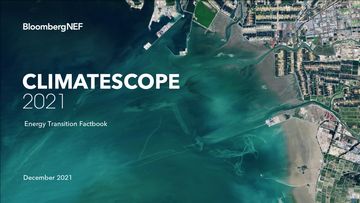India
With a cumulative score of 2.35, India ranks number 2 among emerging markets and number 16 in the global ranking.
- Emerging markets
- Asia-Pacific
2.55 / 5
Power score
1.88 / 5
Transport score
Buildings score
Only 56 markets (28 emerging markets) are scored on the Buildings sector. See the full list on the methodology page.
Low-carbon strategy
Net-zero goal and strategy
At the COP26 climate meeting in November 2021, India announced a 2070 net-zero target. However, this target is yet to be formalized and may be conditional on receipt of international climate finance. The country has previously argued that pushing developing countries with low per capita emissions to commit to a net-zero goal will undermine their right to economic development.
Nationally Determined Contributions (NDC)
India’s nationally determined contribution (NDC) to the Paris Agreement includes a target to reduce the emissions intensity of its GDP by 33-35% by 2030 from 2005 levels. It is assumed that all sectors of the economy are covered. At COP26, Prime Minister Modi increased this target to 45% but a formal revision to the NDC is awaited.
Fossil fuel phase-out policy
India does not have an official fossil-fuel phase-out policy. The increasing economic attractiveness of renewables and the focus on reducing air pollution could act as triggers for early coal plant retirements.
Power
Power policy
India is the world’s largest market for renewables auctions. The transparent mechanism and ambitious government targets have attracted many domestic and foreign players, helping to drive down the cost of clean power.
Power policies
Power prices and costs
In India, residential and agricultural users typically pay less than the cost of supply. These segments are cross-subsidized by commercial and industrial users. Reforms are currently underway to increase private participation in the power distribution sector and allow users to buy electricity from different suppliers. Fossil-fuel derived power gets paid a two-part tariff -a fixed price component for availability and a variable price component for dispatch. Renewables have one fixed tariff for 25 years with no indexation to inflation.
Power market
India’s power market has private participation in generation, transmission and distribution. Most of the power supplied is based on bilateral contracts, with a smaller volume transacted in the spot market. Power generators sign standardized PPAs in local currency, following the guidelines issued by the government.
Installed Capacity (in MW)
Electricity Generation (in GWh)
Utility privatisation
Which segments of the power sector are open to private participation?
Wholesale power market
Does the country have a wholesale power market?
Doing business and barriers
The Indian government's priority is expanding the grid network to supply 24x7 power. The integration of renewables is being aided by building out inter-state transmission grids. There have been no payment defaults by offtakers, but the dues to power producers from distribution companies are rising because of late payments. In response, federal agencies have taken the lead in signing offtake contracts and have a good payment track record.
Currency of PPAs
Are PPAs signed in or indexed to U.S. Dollars or Euro?
Bilateral power contracts
Can a C&I (Commercial and Industrial) customer sign a long-term contract (PPA) for clean energy?
Bilateral power contracts
Can a C&I (Commercial and Industrial) customer sign a long-term contract (PPA) for clean energy?
Bilateral power contracts
Can a C&I (Commercial and Industrial) customer sign a long-term contract (PPA) for clean energy?
Fossil fuel subsidies
Does the government influence the wholesale price of fossil fuel (used by thermal power plants) down through subsidies?
Fossil fuel taxes
Does the government influence the wholesale price of fossil fuel (used by thermal power plants) up through taxes?
Transport
EV market
Battery electric two/three wheeler sales have a five-year rolling average growth of over 95% driven by attractive economics compared to internal combustion engine models. There is room for further growth as the share of battery two/three wheeler and passenger EVs in annual sales still remains below 5%. India adopted the equivalent of Euro 6 emission standards in 2020, and does not subsidize diesel or gasoline.
EV policy
India has a federal support scheme for electric mobility - Faster Adoption and Manufacturing of Electric Vehicles Phase II (FAME) – which gives incentives for electric buses, three-wheelers and four-wheelers to be used for commercial purposes. Many states also have their own policies to encourage EV adoption, with subsidies and exemptions on taxes.
Transport policies
Fuel economy standards
Does the country have a fuel economy standard in place?
Buildings
Buildings market
India has an Energy Conservation Building Code. It is applicable to buildings or building complexes that have a connected load of 100 kW or greater or a contract demand of 120 kVA or greater and are intended to be used for commercial purposes. Buildings intended for private residential purposes only are not covered.
Energy performance standards
Are there minimum energy performance standards for buildings?
Energy efficiency plan
Does the country have a national energy efficiency plan?
Buildings policy
The government has yet to implement any substantive policy support in this sector and the low-carbon heating and cooling market remains at an early stage.

